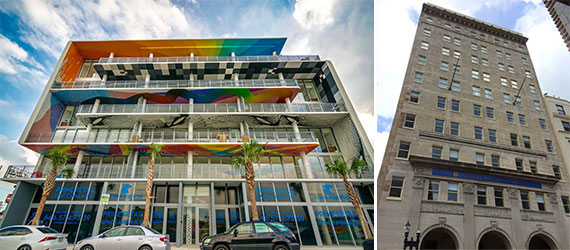Trending
Downtown, Wynwood and Coral Gables developers reveal obstacles in boutique market: ULI panel

When it comes to developing boutique properties, investors must be prepared to finance most of the construction and fight for rezoning and land use changes for projects to get off the ground, according to a panel of small scale project builders who spoke at last week’s Urban Land Institute 2016 South Florida Summit.
Daniel Pena Giraldi, general manager and director of Stambul, co-developer of the Langford Hotel in downtown Miami, said his company invested most of its own money in renovating the former bank building because banks don’t want to take the risk with an old property that requires extensive renovations.
The Langford was built in 1925 and is designated a national historic site. Stambul is also redeveloping the historic Old Post Office in downtown Miami, a 34,555-square-foot building at 100 Northeast First Avenue that Giraldi plans to convert into high-end, chef-driven food retail and restaurant market.
“Projects like ours requires a developer to be prepared to come in with a lot of equity,” Giraldi said. “In our case, a lot of our deals have been heavy on equity. We don’t leverage until the end or until after the project is open.”
Venny Torre, CEO of Torre Companies who was also on the panel, concurred with Giraldi. Torre’s firm develops luxury townhouses in Coral Gables for empty nesters that range from $2 million to $9 million. “The equity position has to be at least 50 percent or you won’t get off the ground. Banks are not taking a risk in any shape or form.”
The third panelist, Fortis Development Group Managing Director David Polinsky, spoke about the obstacles his company faced in obtaining approval from the city of Miami to build the first residential building in Wynwood. Last October, Fortis completed 250 Wynwood, a six-story condo building with 11 units.
“This was the first vertical construction project in Wynwood in over 10 years,” Polinsky said. “The deeper we dug, the more zoning problems we found getting the project off the ground. We had eight waivers on this project. It took a lot of time and money.”
Ultimately, 250 Wynwood served as a case study for the development of Wynwood’s neighborhood revitalization district, which now allows developers to build small-to-midrise residential and commercial buildings but also preserves the area’s eclectic industrial character.




